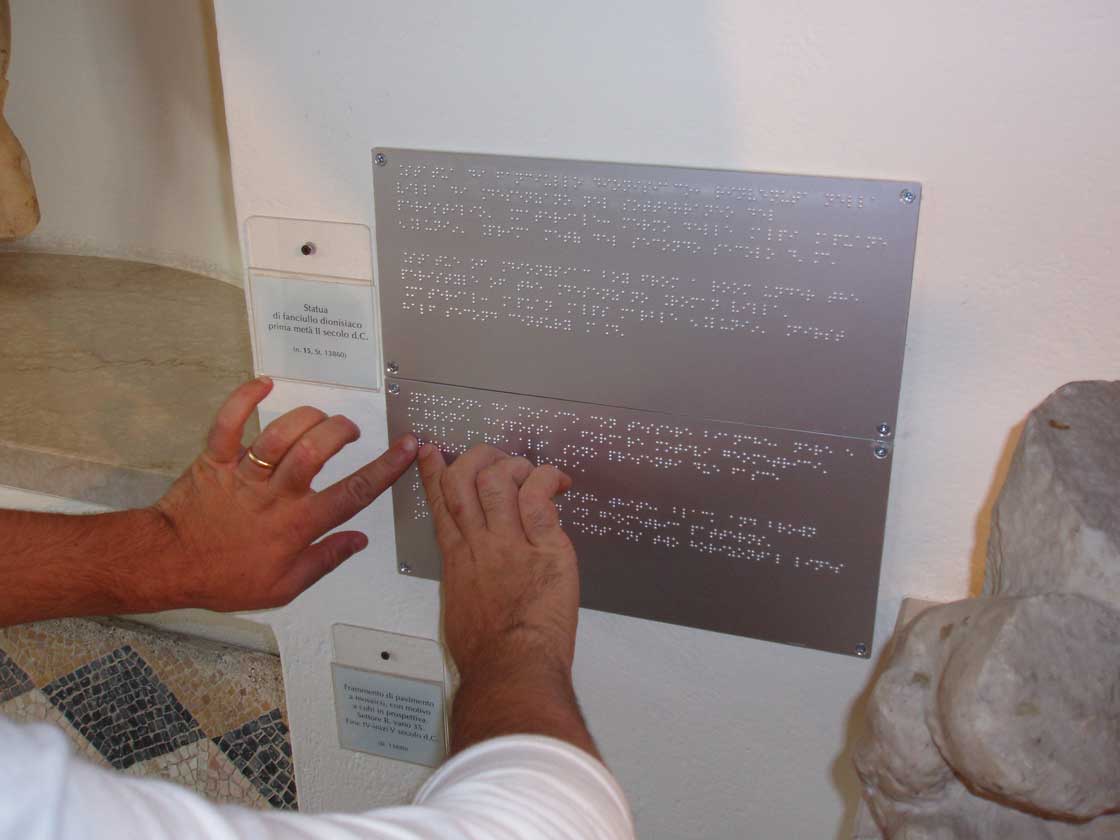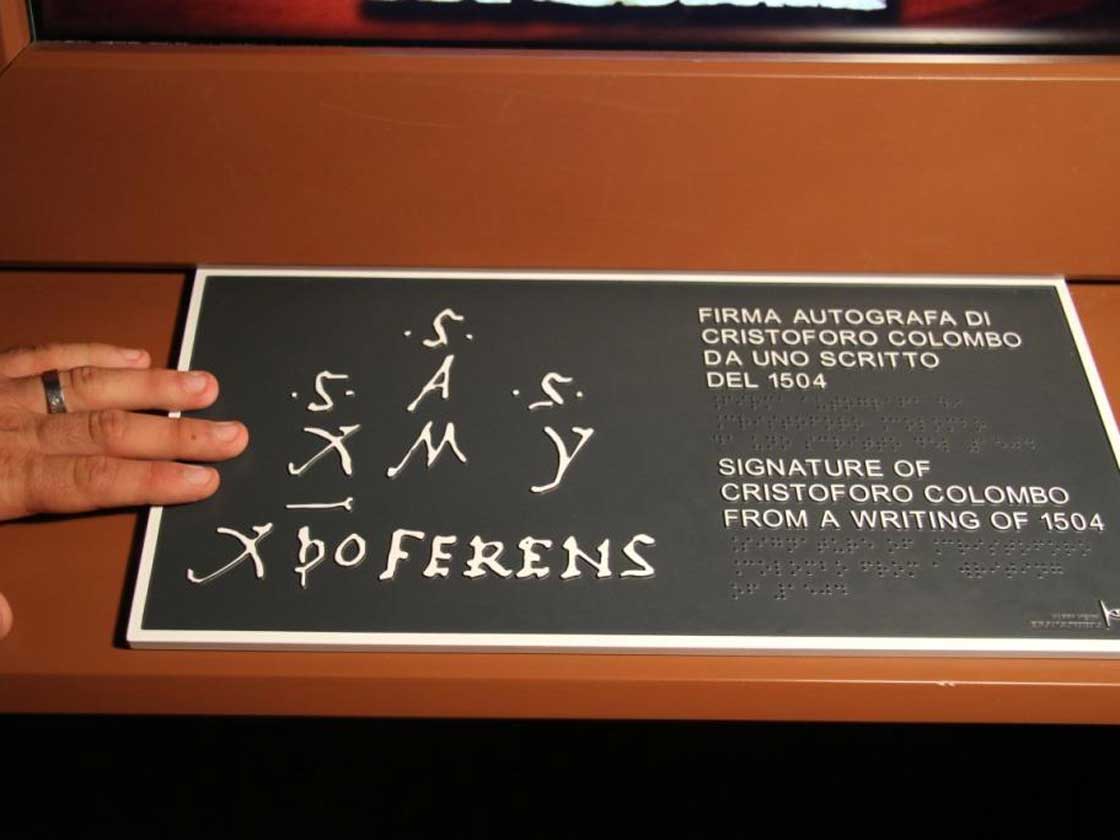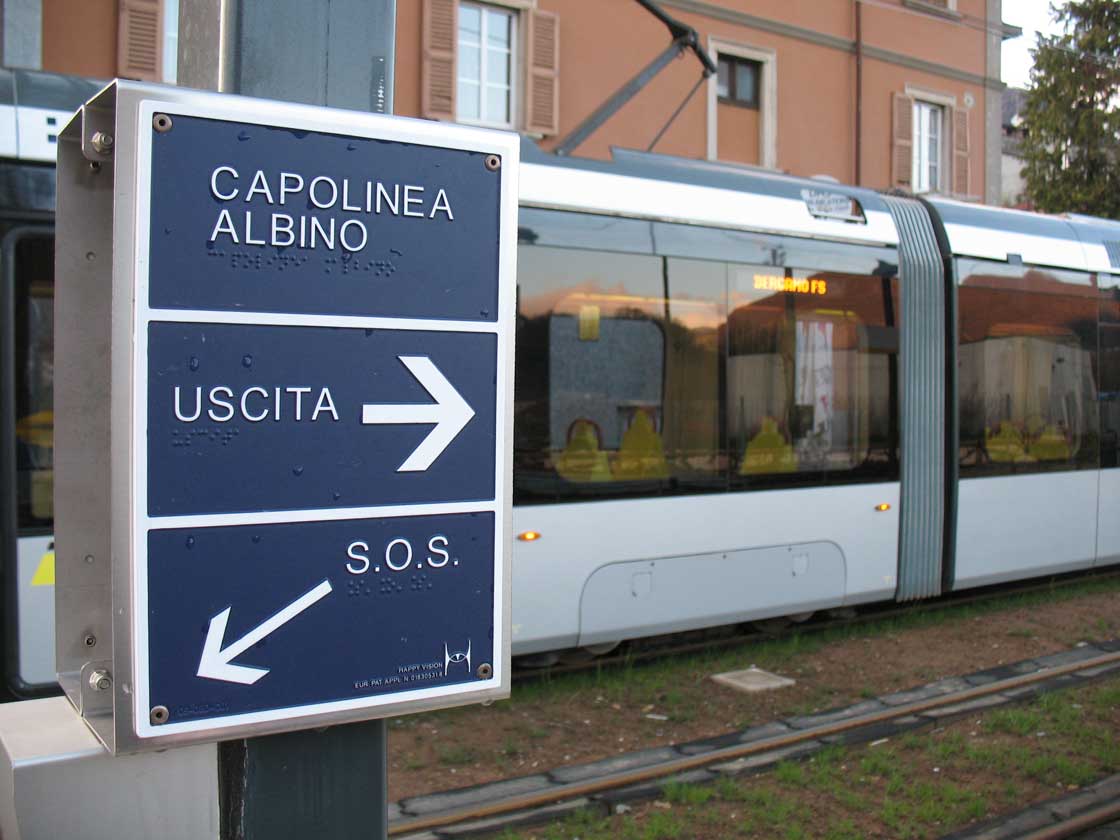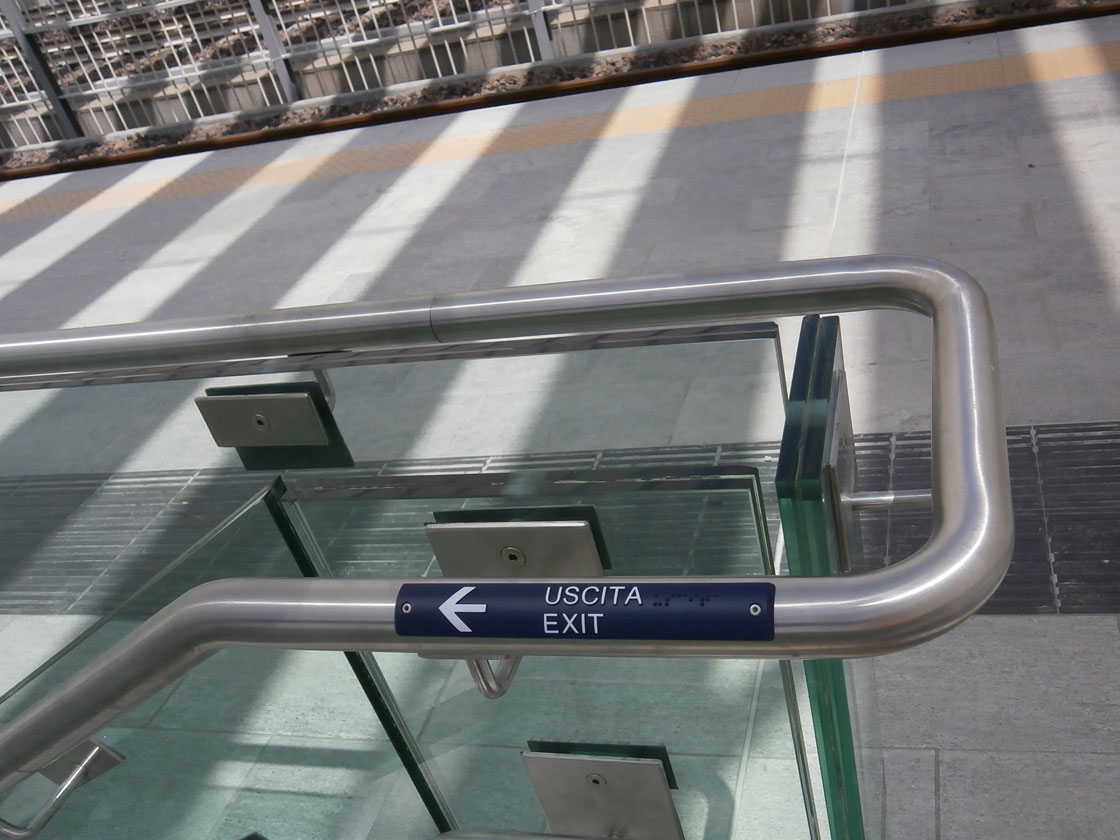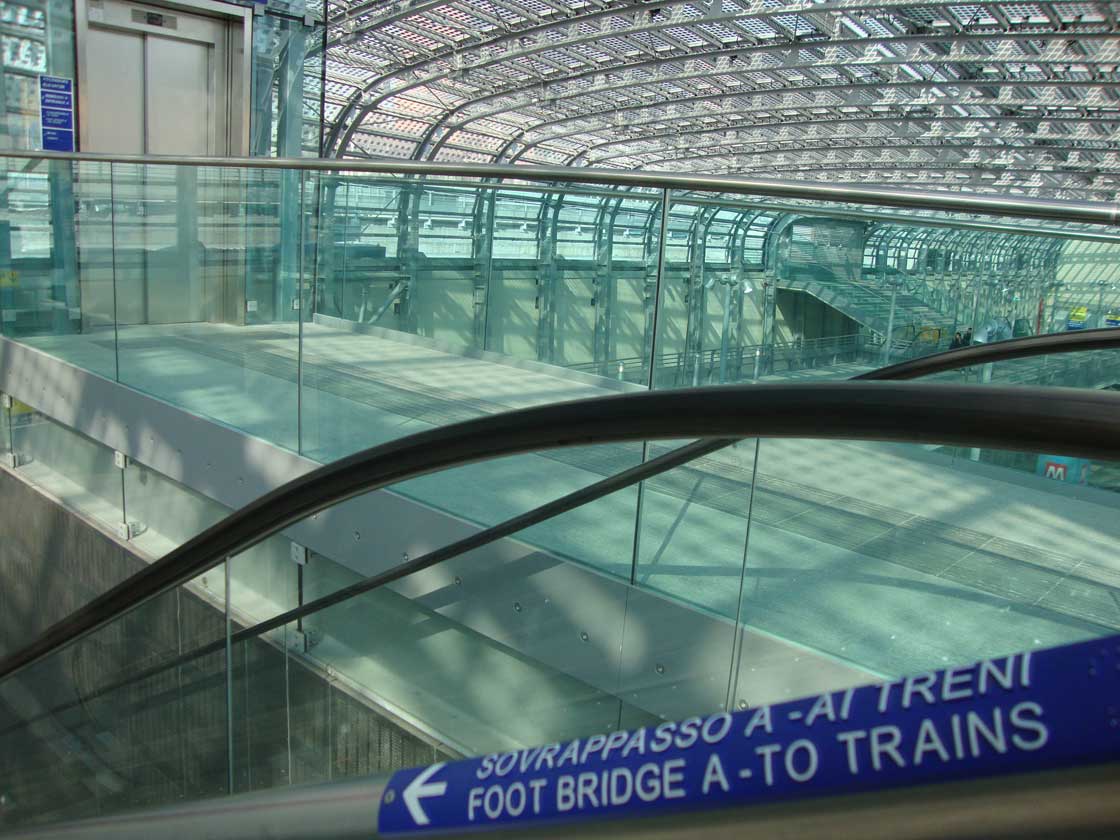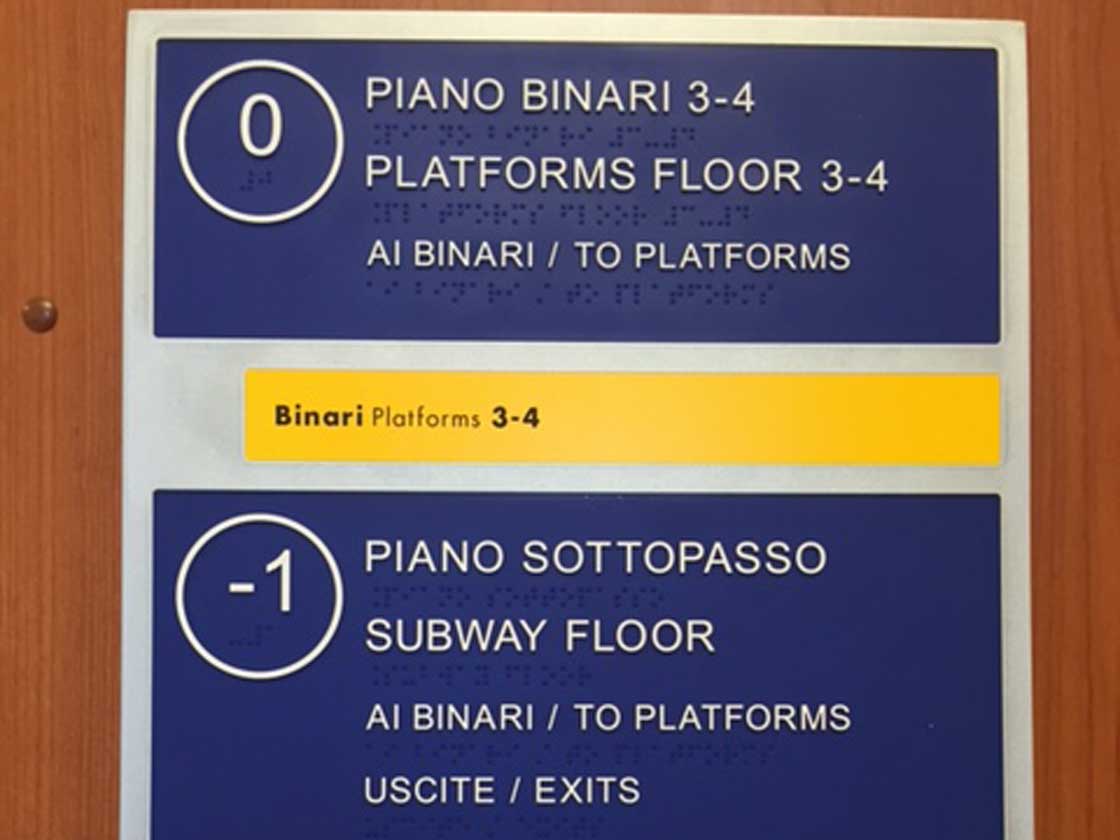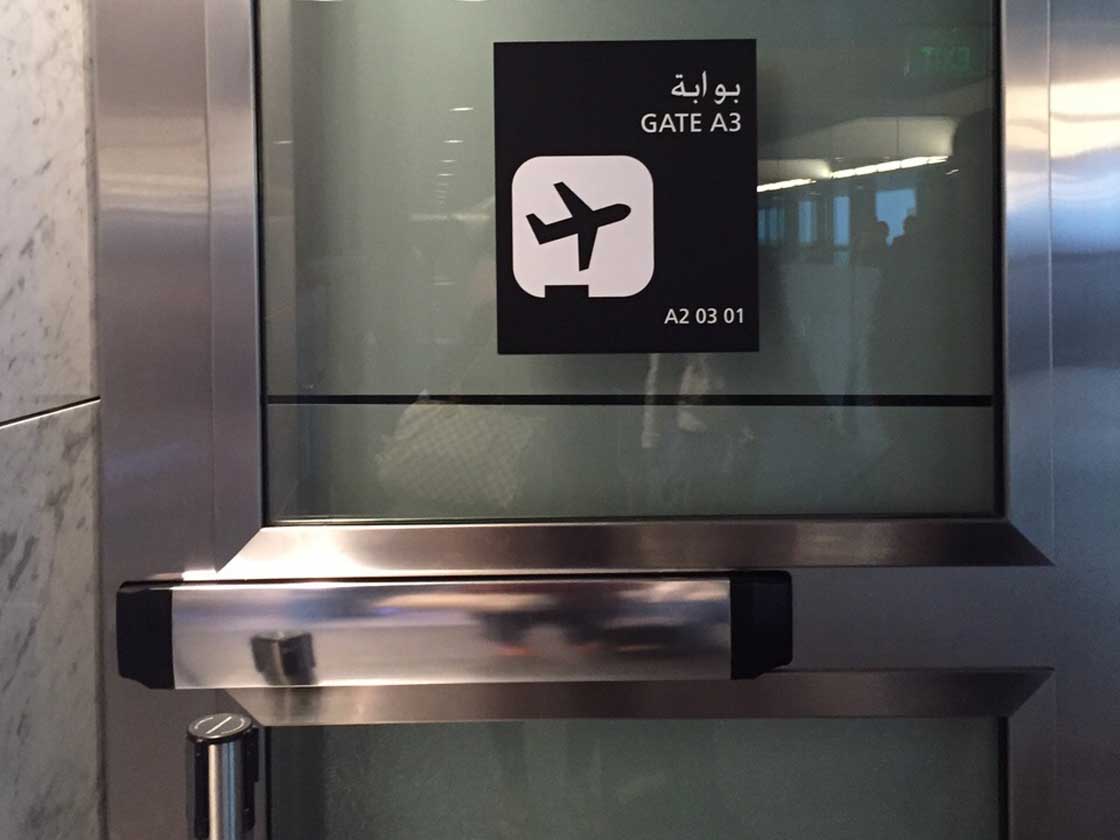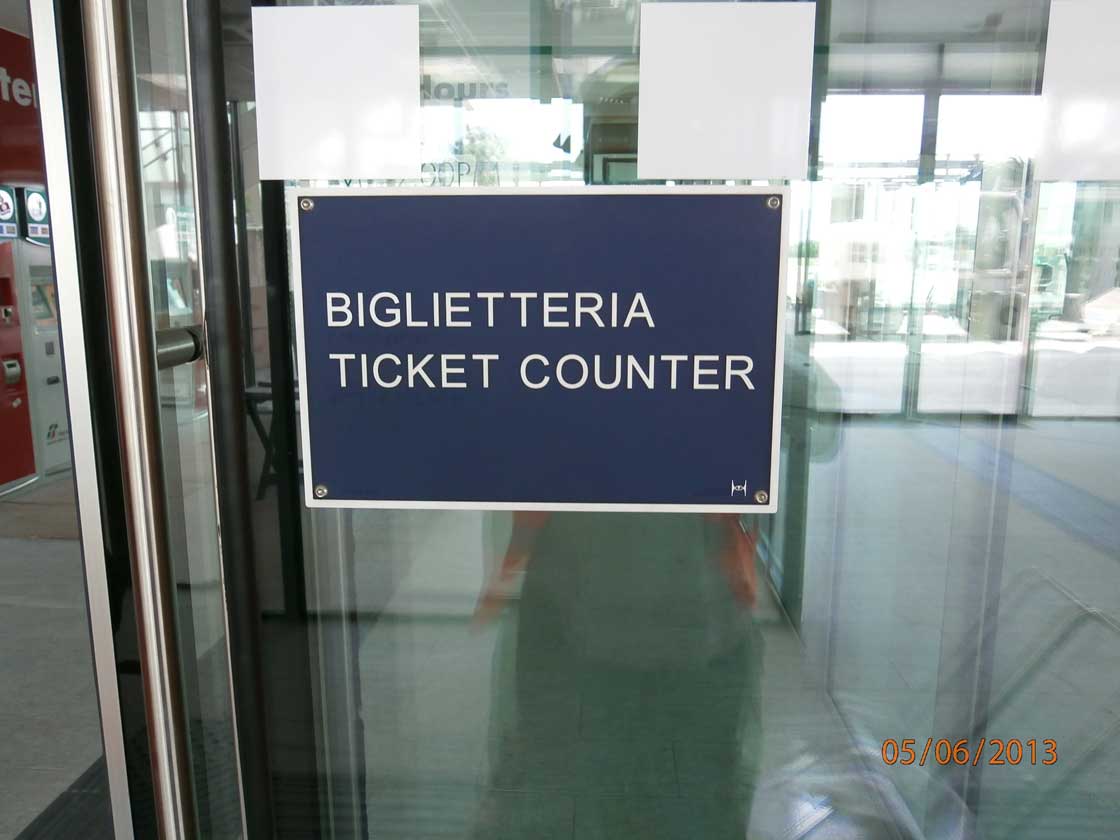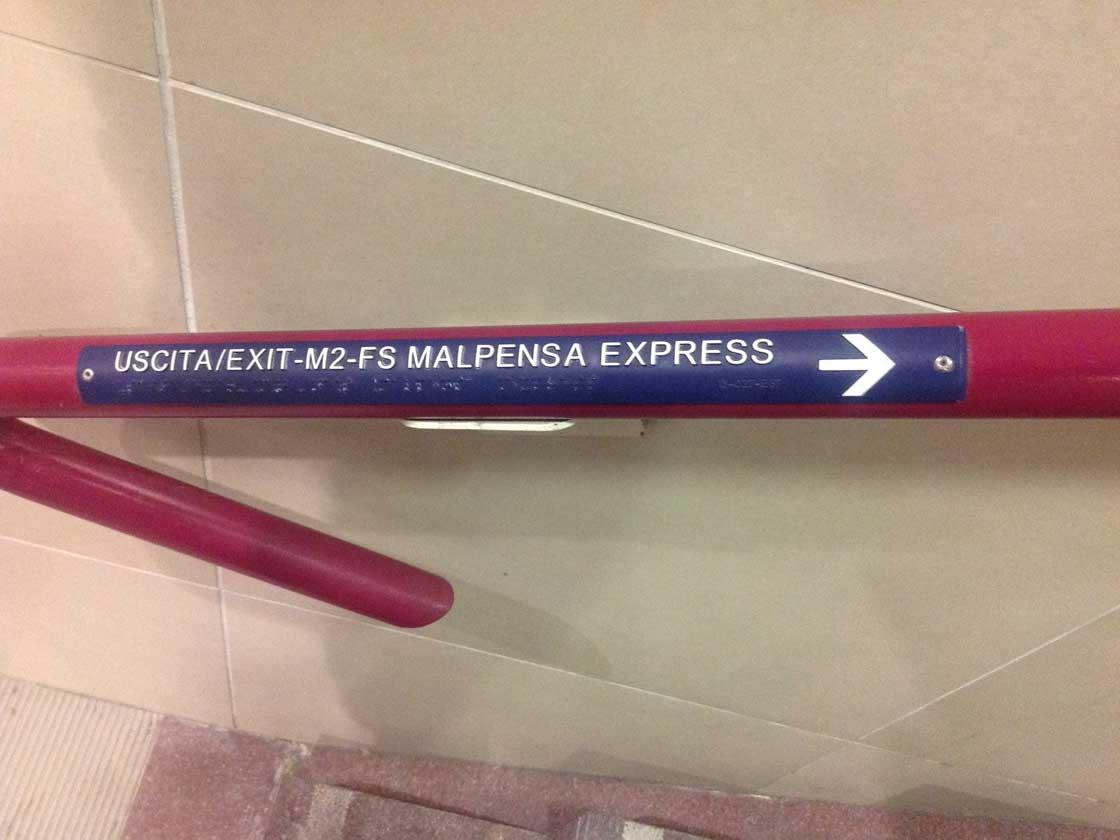Unlike the tactile map, which provides a plan view and raised information, the tactile signs provide raised information without a plan view.
The relief needs to be flawless for the tactile signs just as for the tactile map. That way, the hands of the blind person can explore it easily and the strongly contrasting colors enable it to be read by partially sighted people.
Both the block letters and the braille can be translated into a foreign language: the signage produced by Happy Vision for DOHA AIRPORT in Qatar reproduced the Arabic in raised block letters and braille.
The relief can show any shape and thus provide all sorts of information. This is the case of the Christopher Columbus signature signage created by Happy Vision for Genoa's GALATA MUSEUM OF THE SEA.
The tactile signs can be used in many ways, for example:
- at service counters open to the public, to indicate the service on offer;
- at bus stops, to show the stops along the route;
- in towns, to show the names of streets or describe monuments and important tourist attractions;
- in stations next to elevators to show floors, along platforms to show the track number and the exit direction, in the passenger building to show the Sala Blu (room for people with impaired mobility);
- in airports to permit calls for assistance;
- in museums to illustrate works of art;
- in parks to indicate a plant or tell the story of the evolution of the plants;
- in hotels and on ships, to identify the numbers on the doors of rooms and on the key labels;
- in banks, to provide instructions on how to use the ATM.
The tactile signage for banisters is particularly useful: the visually impaired always use the banisters, which are a fixed point that is used for orientation and safety. It is accordingly very convenient to find tactile signage on the banister containing information on the direction of the stairway. Even simple tactile signage can be an excellent tool for complementing an integrated project to enable a visually impaired to move independently and safely.
All types of adhesive tactile restroom signs are also available in plastic.
For further information about the installation, see the dedicated page: INSTALLATION.
Raised tactile signage in strongly contrasting colors is useful for everyone, is inclusive and does not distinguish between people with differing abilities: it is made in the spirit of the guidelines for “DESIGN FOR ALL”.





